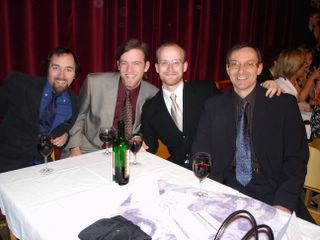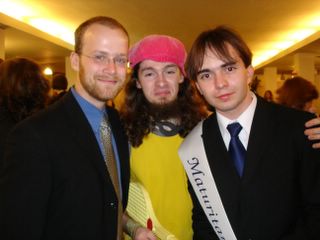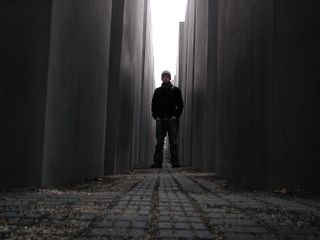Maturita Exams
Its funny how life tends to stay busy even after the things that keep you busy come to an end. Teachers all across the Czech Republic (American teachers included) are quite busy these days preparing for a series of exams in mid-May that strike fear into the hearts of all graduating seniors. I thought I might use this blog installment to tell you about the Maturita exams.
The Maturita exams have existed in the Czech Republic for decades easily, if not longer. These exams may even trace back to the great Czech educational reformer, Jan Amos Komensky. I’m too lazy to do the research on that one, so lets just say “a long time.” The Maturitas are certainly the most significant event in a student’s pre-university career. So much so, that most of my oldest adult students can still tell you what subjects were covered in their Maturita as well as the specific questions asked.
So here’s how it works. At the beginning of the year, all of the students in their final year of Gymnazium (like a high school, but limited to only those students who manage to do well on an exam at the age of 11 or 15) are given a list of the possible topics to be covered on the Maturita in 4 subjects. All students must test in Czech Language, one foreign language, and two other subjects of their own choosing. The majority of students test in English to fill their foreign language requirement, though German, French, Russian, and Spanish are also possibilities.
The topics on the English Maturita exam include:
- USA: Geography, People, History, Nat. Economy, Gov. and Admin.
- Great Britain: Geography, People, History, Nat. Economy, Gov. and Admin.
- English Speaking Countries: Geography, People, History, Nat. Economy, Gov.
- Czech Republic: Geography, People, History, Nat. Economy, Gov. and Admin.
- Big British Cities
- Big American Cities
- Prague
- My Town and its Surroundings
- Educational Systems
- British Literature
- American Literature
- Social World Problems
- Me and My Family
- A Life Story
- Science and Technology
- Health, Sickness, Disease
- Sport and Games
- Food and Meals
- Housing, My Room
- Holiday, Traveling
- Culture and Entertainment
- Shopping, Fashion, Clothes
- My Daily Program and Hobbies
- Festivals and Customs
- Weather, Climate, Environmental Protection
The week of the exam, students arrive in groups of three or four at time specified a month or so in advance. One at a time, they choose a topic randomly from a hat, and are given 15 minutes to prepare on their own. At the end of that 15 minutes, the students sits before a panel of 2-5 teachers and presents the topic for 15 minutes. In the English exams, the presentation is inter-mixed with questions from the teachers regarding vocabulary, factual information, and oftentimes simple leading questions to help the student fill his or her 15 minutes. The last 2 or 3 minutes of the test are spent going over 20 grammar questions. Subjects like math require the student to solve complex problems and then defend their methods and answers.
45 minutes later, they do it again in a different subject... until all 4 subjects have been completed.
At the end of the day, the students again stand before their examiners, the school principal, their class teacher, and a national representative from the Ministry of Education and are given their scores. A “1” is the highest possible score. A “5” means that the student may not apply for university the following month, and must re-take the Maturita exam in September.
Needless to say, my colleagues and I have been quite busy reviewing, re-reviewing, and conducting practice Maturitas in recent weeks. This will certainly continue until the first week of May. The second week of May, students have no classes and are expected to study all week. The remarkable thing is, they really do it. Any extended break in American schools means trips to warmer places. Here, students stay home all week and actually study.
In the midst of all of this, I’ve also spent a great deal of time at Maturitni Plesi… they’re like Senior Proms but with parents, teachers, ballroom dancing, and lots of alcohol. You’ll find a few pictures below.
Anyhow, I hope you’ve enjoyed this lesson in Czech Education… and that you’re doing well in your respective corners of the world. Shoot me a note sometime.
…and for those of you who have shot me a note recently… I’ll reply soon, I promise.












